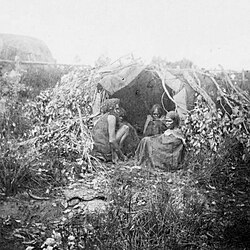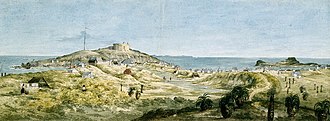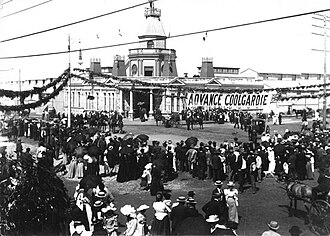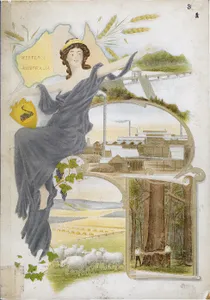Western Australia is the largest of the six states and two Territories of Australia. Comprising the entire western third of Australia's land mass, the eastern border of Western Australia runs along the 129th meridian east. There is evidence of Aboriginal habitation in Western Australia 50-70 thousand years ago. Two centuries before George Vancouver formally claimed the land for King George III at Possession Point, King George Sound, Albany in 1791, Dutch and French mariners had explored and mapped the western coastline[1].
A formal British settlement was established on the Swan River in 1829, but it took several years to establish a viable colony. The region became the State of Western Australia after Federation in 1901, although since then there have been several attempts to succeed from the Commonwealth.
In the 2021 Census Western Australia had a population of 2.7 million people, of which about 3.3% identify as Indigenous Australians[2]. The capital of Western Australia is Perth, home to 2.1 million people, 80% of the state's population.
Research your ancestors on MyHeritage
History of Western AustraliaHistory of Western Australia
Indigenous HistoryIndigenous History
Over 60,000 years ago, when sea levels were considerably lower than they are today, Australia was connected to Papua New Guinea and Tasmania by land bridges, forming a mega-continent called Sahul.
...models hypothesise the first Australians landed on the shores of Western Australia, around the Kimberley region, about sixty thousand years ago, and in as little as 6,000 years they had settled across the country, from the far north of the tropics to the deep south of Tasmania. [3]

There are 5 main kinship groups in Western Australia, divided into many smaller cultural groups.
- Noongar, from the South West of Western Australia
- Yamatji, from the Murchison, Gascoyne region
- Wankai, from the Goldfields and Nullarbor regions
- Kimberley peoples from the Kimberley region, and
- Ngaanyatjarra from the Central Desert region.
191 Indigenous languages have been documented within the borders of Western Australia. Tragically, only 31 are still being spoken[4].
Aboriginal resistance to European settlement was fierce but ultimately futile.
As elsewhere in Australia, disregard of indigenous landrights triggered unrest within the Aboriginal communities. Indigenous resistance in the Perth region was quelled in 1834 only after an intense and bloody confrontation known as the Battle of Pinjarra[5].
European SettlementEuropean Settlement
While it's likely that the Portuguese may have sighted the coast of Western Australia during the 16th century, the first documented contact of Europeans in Western Australia came with the advance of the Dutch East India Company into the Indian Ocean in the 17th Century. Dirk Hartog, a dutch explorer, made landfall in 1616 when he was blown off course en route to Batavia (modern day Jakarta). Half a century later Abel Tasman's voyages helped to fill in the map of the west coast. But the Dutch saw no value in this territory and never laid claim to it[5].
There was a point in time when Western Australia could have become French territory.
On 30 March 1772, [Francois de] Saint-Alouarn landed at Turtle Bay on the northern tip of Dirk Hartog Island. There he claimed possession of the western half of New Holland for King Louis XVI. This was two years after Captain James Cook landed at Botany Bay, and 16 years before the arrival of the First Fleet. To support the claim he buried two bottles containing statements of proclamation written on parchment. Two silver coins were placed on the top of each bottle, which were sealed by lead caps.[6]
The French claim was never enforced, and in 1826, disturbed by reports of possible French interest, and misbehaving American whalers, New South Wales Governor Ralph Darling sent Maj. Edmund Lockyer to stake a claim for the UK, by establishing a garrison at King George Sound (Albany) on the south west coast[5].

Soon after, Capt. James Stirling and botanist Charles Frazer explored further up the Swan River. Stirling later went to England to push for the establishment of Australia’s first non-convict colony with himself as governor. As a result, between 1829–30, nearly 4,000 people migrated to the Swan River Colony, the site of the state's contemporary capital, Perth. Unfortunately Sterling had misjudged the fertility of the area so between 1843-1844 almost half of the population migrated east[7]. By 1847, Facing a critical shortage of labor, a group of wealthy pastoralists petitioned the government to bring in convict labor to stimulate the economy and open up more areas to farming. Many of the free settlers objected, but faced with overcrowded English prisons, the British Government declared Swan River a penal colony and sent over 100 prisoners. By 1868, over 9,000 convicts had been transported to Western Australia[7].
Western Australia developed a lucrative food and fibre industry, with wheat and wool powering the expansion inland. A pearling industry developed in the north, exploiting pregnant aboriginal and pacific Island women for their ability to hold their breath for extended periods.
In 1879, explorer Alexander Forrest reported good pastoral country in the Kimberley area. This brought investment and cattle from the eastern states.
A legislative Council, made up exclusively of wealthy male landowners, had been elected in 1870 but was beholden to the Governor. In 1890, the British Parliament passed an Act granting self-government to the colony.

Gold was initially discovered in Western Australia in 1885, the rush bringing a wave of new settlers. Further discoveries in Murchison (1891), Coolgardie (1892) and Kalgoorlie (1893) sparked "true gold fever". For a while, Coolgardie was the third largest town in the colony, after Perth and Fremantle.
In the late 19th century there was talk of the gold-rich region around Kalgoorlie seceding from Western Australia, as a colony or state called Auralia. This campaign coincided with the reluctance in Perth regarding Western Australia taking part in Australian Federation.[1]
Post FederationPost Federation
On January 1st, 1901, Western Australia joined the five other British self-governing colonies of Queensland, New South Wales, Tasmania, South Australia, and Victoria to form the Commonwealth of Australia, establishing a system of federalism in Australia[8]. However, Western Australia only agreed after they were offered a five-year transitional period on inter-state tariffs and a transcontinental railway line. The Indian Pacific Railway between Perth and Sydney is now one of Australia's great rail journeys.
The gold rush eventually petered out and the economy once again became dependent upon wool and wheat. When commodity prices collapsed during the depression, so too did the Western Australian economy.

In a 1933 referendum, 68% of voters favoured seceding from the Federation. The Premier, Philip Collier, argued for secession in London but the British Government decided they could not grant it.
Western Australia's economic recovery began in earnest after WWII with post war migration.
In 1961, a ban on exporting iron ore was repealed. Exploitation of minerals such as iron ore in the north and nickel around Kalgoorlie, led to a mining boom that is still going today.
Western Australia is one of the most productive and diversified mineral and petroleum regions in the world. It is the major driver of Australian external trade, accounting for around a half of the country’s goods exports. Exports contribute over half to the State’s gross state product. [9]
Today, Mining, agriculture and tourism are some of main economic drivers of the West Australian economy.
Government in Western AustraliaGovernment in Western Australia
Western Australia is divided into seats represented by state parliamentarians. The West Australian State government is responsible for areas of public administration such as schools, hospitals and public transport. They also manage the State Library of Western Australia and State Records of Western Australia, which holds the state archives.
Local Government Areas (LGA's), also known as local councils, are responsible for issues that relate to a local area, sometimes referred to as the 3-Rs - Roads, Rubbish and Recreation. Councils are also responsible for local libraries[10].
Demographics of Western Australia Over 32% of Western Australia's residents were born in overseas. The 2021 Census included a question on ancestral background. The top ancestral backgrounds in Western Australia are:
- English 37.6%
- Australian 29.7%
- Irish 8.8%
- Scottish 8.7%
- Italian 5.2%
The top countries of birth of residents in South Australian residents were
- Australia 62.0%
- England 7.4%
- New Zealand 2.8%
- India 2.3%
- South Africa .7%
After English, the most common languages spoken in Western Australia were Mandarin (1.9%), Italian (1.0%), Vietnamese (0.9%) and Punjabi (0.8%)[11].
Most popular surnames in Western AustraliaMost popular surnames in Western Australia
Researching your Family History in Western AustraliaResearching your Family History in Western Australia
Records relevant to family history research can be found in collections at a national, state and local level. As a British colony, some very early records may also be found in The National Archives in the UK.
The primary sources for genealogical records in South Australia are Government agencies, archives and libraries.
Digital images of historical Birth, Death and Marriage certificates can be ordered from the Western Australian Registry of Births, Deaths and Marriages. They have a searchable index and a comprehensive guide to ordering certificates.
The State Records of Western Australia, holds a selection of records related to family history. Search or browse the collection to find government records from 1829 to the present, including education, health and welfare, law enforcement, immigration and aboriginal records.
The State Library of Western Australia has a series of guides with links to library resources for family historians..
Trove, managed by the National Library of Australia(NAA), is an extraordinary free resource that aggregates content, including digitised newspapers, magazines, images, diaries and letters, and other material, dating from the establishment of the colony, from collections around Australia. Military Archives from around the country are predominantly held at the Australian War Memorial (AWM) . The collection includes millions of items relating to individuals, units and conflicts, including digitised service records.
In regional areas and small country towns, local history and genealogical societies are a great source of local records. Many regional towns in NSW have a local history society, and/or a local library and museum. The Federation of Australian Historical Societies has a searchable index where you can find contact details for a society in a specific town or locality, or simply do a web search for the town name plus historical society.
And of course, MyHeritage holds a large number of records for NSW.
See alsoSee also
Explore more about Western AustraliaExplore more about Western Australia
- Western Australia - catalog collection
- MH Blog entries
References
- ↑ 1.0 1.1 Wikipedia - History of Western Australia
- ↑ "Snapshot of Western Australia | Australian Bureau of Statistics". www.abs.gov.au. Tue, 28/06/2022 - 10:00. Retrieved 2024-08-27.
{{cite web}}: Check date values in:|date=(help) - ↑ "Ancient 'super-highways' of Aboriginal migration across Australia mapped by researchers". ABC News. 2021-04-30. Retrieved 2024-08-27.
- ↑ Wikipedia - Aboriginal cultures of Western Australia
- ↑ 5.0 5.1 5.2 "Western Australia - Exploration, Colonization, Gold Rush | Britannica". www.britannica.com. 2024-08-27. Retrieved 2024-08-27.
- ↑ "1772 François de Saint-Alouarn". Shark Bay. Retrieved 2024-08-27.
- ↑ 7.0 7.1 "Fremantle Prison History I Swan River Colony Pre 1850". Fremantle Prison. Retrieved 2024-08-27.
- ↑ Wikipedia - Federation of Australia
- ↑ "WA's Economic Strengths". www.watc.wa.gov.au. Retrieved 2024-08-27.
- ↑ "The responsibilities of the three levels of government - Parliamentary Education Office". peo.gov.au. Retrieved 2024-08-27.
- ↑ "Snapshot of Western Australia | Australian Bureau of Statistics". www.abs.gov.au. Tue, 28/06/2022 - 10:00. Retrieved 2024-08-27.
{{cite web}}: Check date values in:|date=(help)


